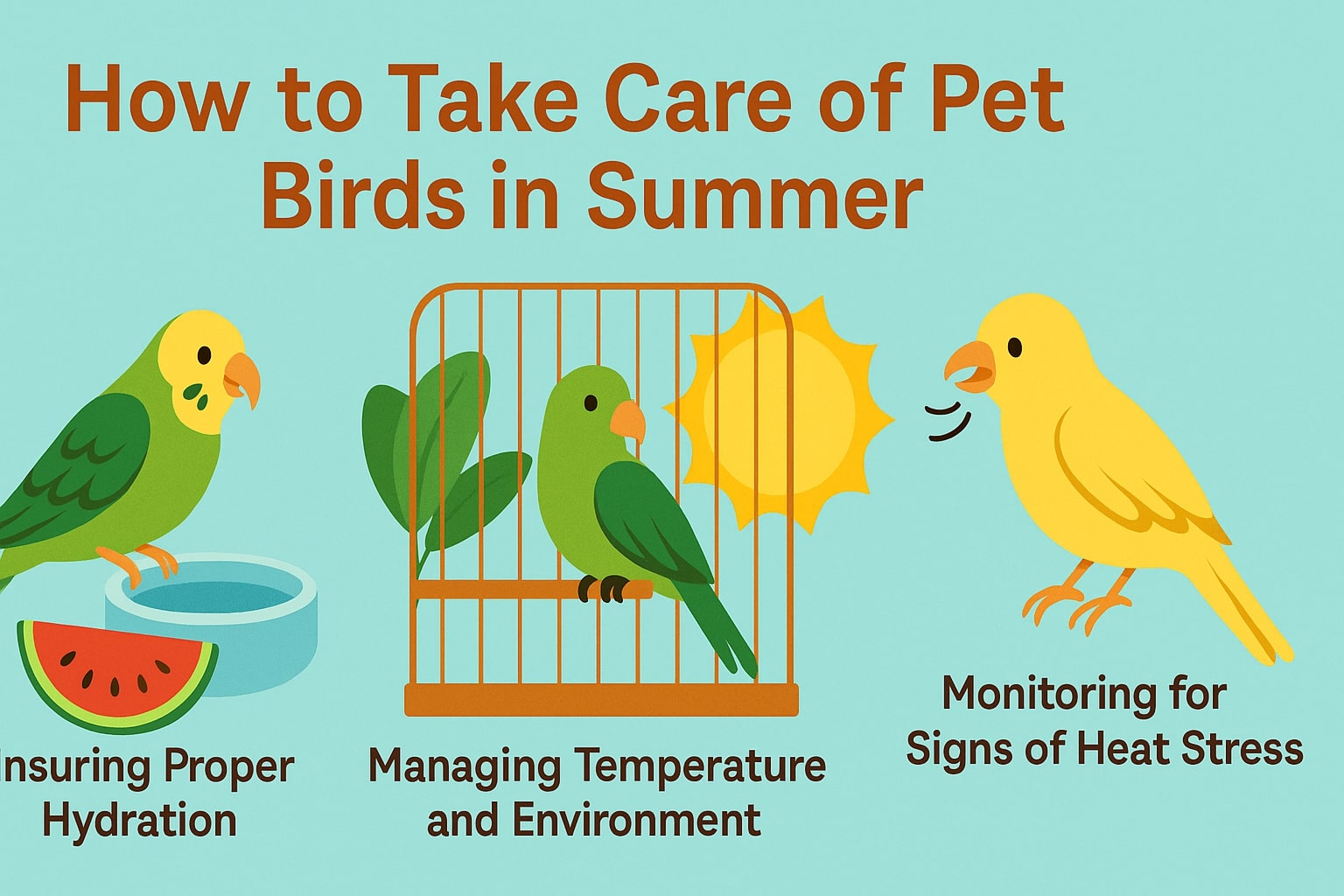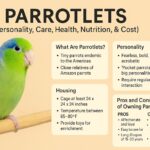Caring for pet birds during the summer months requires a thoughtful approach that addresses their unique sensitivities to heat, hydration, and environmental changes. Unlike many other pets, birds are particularly vulnerable to temperature fluctuations and can quickly succumb to heat stress if not properly cared for.
This comprehensive guide covers essential strategies for keeping your feathered companions healthy, comfortable, and safe throughout the hottest part of the year.
Understanding the Summer Challenge for Birds
Birds regulate their body temperature differently from mammals and lack sweat glands, making them especially prone to overheating. High temperatures, direct sunlight, and increased humidity can quickly lead to dehydration, heat stress, or even life-threatening heatstroke. Recognizing these risks is the first step in providing effective summer care for your pet birds.
Ensuring Proper Hydration
Constant Access to Fresh Water
Hydration is the cornerstone of summer bird care. Birds lose water rapidly through respiration, especially in hot weather, so always provide multiple sources of clean, cool water. Refresh water dishes several times a day to prevent stagnation and bacterial growth. Consider placing extra water bowls or birdbaths in and around the cage to encourage drinking and bathing.
Hydrating Foods
Supplement your bird’s regular diet with water-rich fruits and vegetables. Options like watermelon, cucumber, apples, berries, and grapes not only provide hydration but also offer essential vitamins and minerals. Always wash fruits thoroughly and avoid anything overly cold or sugary. Remove uneaten fresh foods promptly to prevent spoilage1.
Bathing Opportunities
Most pet birds enjoy bathing, which helps them cool down and maintain feather health. Offer a shallow dish of water for splashing or mist your bird lightly with a spray bottle. This not only lowers their body temperature but also provides enrichment.
Managing Temperature and Environment
Shade and Ventilation
Place the bird’s cage in a well-ventilated, shaded area, away from direct sunlight and heat sources. If your bird is housed outdoors, ensure there is ample shade throughout the day. Indoors, avoid placing cages near windows that receive intense sun, and use curtains or blinds to block out heat.
Safe Use of Fans and Air Conditioning
Fans can help circulate air, but never direct them straight at your bird, as drafts can cause discomfort or illness. If using air conditioning, ensure the vent is not blowing directly into the cage. Monitor your bird’s reaction to temperature changes and adjust accordingly. Secure your bird in its cage when fans are on to prevent accidents with fan blades.
Cooling Techniques
To further cool the environment, you can place frozen water bottles or cooling pads near the cage. Adding ice cubes to water dishes or birdbaths helps keep water cool and discourages algae growth. Damp towels hung near the cage can also provide a cooling effect.
Diet Adjustments for Summer
Balanced Nutrition
While hydration is vital, maintaining a balanced diet is equally important. Continue offering your bird’s regular seed or pellet mix to ensure all nutritional needs are met. Supplement with fresh, hydrating fruits and vegetables, but avoid overfeeding sugary or high-water-content foods at the expense of their staple diet.
Chilled Treats
Frozen or chilled fruits and vegetables can be a welcome treat on hot days. However, avoid foods that are too cold, as sudden temperature changes can upset your bird’s digestive system. Always supervise your bird when offering new foods and remove leftovers promptly.
Monitoring for Signs of Heat Stress
Recognizing Symptoms
Birds may exhibit several signs if they are overheating, including:
- Rapid or open-mouth breathing (panting)
- Lethargy or unusual quietness
- Drooped wings held away from the body
- Fluffed-up feathers
- Loss of appetite or reduced activity
If you notice any of these symptoms, move your bird to a cooler area immediately, offer fresh water, and lightly mist them with water. If symptoms persist, seek veterinary attention promptly.
Maintaining Hygiene and Cleanliness
Frequent Cleaning
Heat accelerates bacterial growth, making regular cleaning of the cage, perches, and feeders essential. Change bedding and remove uneaten food daily to prevent the spread of disease. Clean water dishes and birdbaths thoroughly to avoid contamination.
Pest and Parasite Control
Warm weather can attract insects and parasites. Inspect your bird and its environment regularly for signs of mites, ants, or other pests. Use only bird-safe cleaning products and consult your veterinarian for recommended treatments if you suspect an infestation.
Creating a Calm and Safe Environment
Reducing Stress
Birds are sensitive to noise and activity. During peak heat hours, keep noise levels low and minimize handling or strenuous activity. Provide mental stimulation through safe toys and foraging opportunities rather than physical play.
Safety Precautions
If you open windows or doors for ventilation, ensure that screens are intact and secure to prevent escapes. Keep your bird away from harmful fumes, sprays, or chemicals, which can be more potent in the summer due to increased air circulation.
Outdoor Time: Sun and Safety
Safe Sun Exposure
Birds benefit from natural sunlight, which helps them synthesize vitamin D and maintain healthy feathers. Allow your bird some supervised outdoor time during early mornings or late evenings, avoiding the intense midday sun. Always supervise closely to protect against predators and prevent escapes.
Flight Risk Management
If your bird is allowed out of its cage, take extra precautions to prevent accidental flight. Keep doors and windows closed or screened, and consider using a harness or travel cage for outdoor excursions.
Conclusion
Caring for pet birds in summer is a blend of vigilance, preparation, and compassion. By ensuring constant access to fresh water, providing a cool and shaded environment, adjusting their diet, and monitoring for signs of heat stress, you can help your feathered friends thrive even during the hottest months.
Regular cleaning, pest control, and thoughtful interaction further safeguard their health and happiness. With these practical steps, summer can be a safe and enjoyable season for both you and your avian companions.
- 9 Types of Lovebirds (A Comprehensive Guide for Pet Bird Owners) - June 20, 2025
- Labrador Retriever: America’s Most Beloved Family Dog - June 9, 2025
- The Complete Guide to Indian Ringneck Parrots - June 9, 2025















